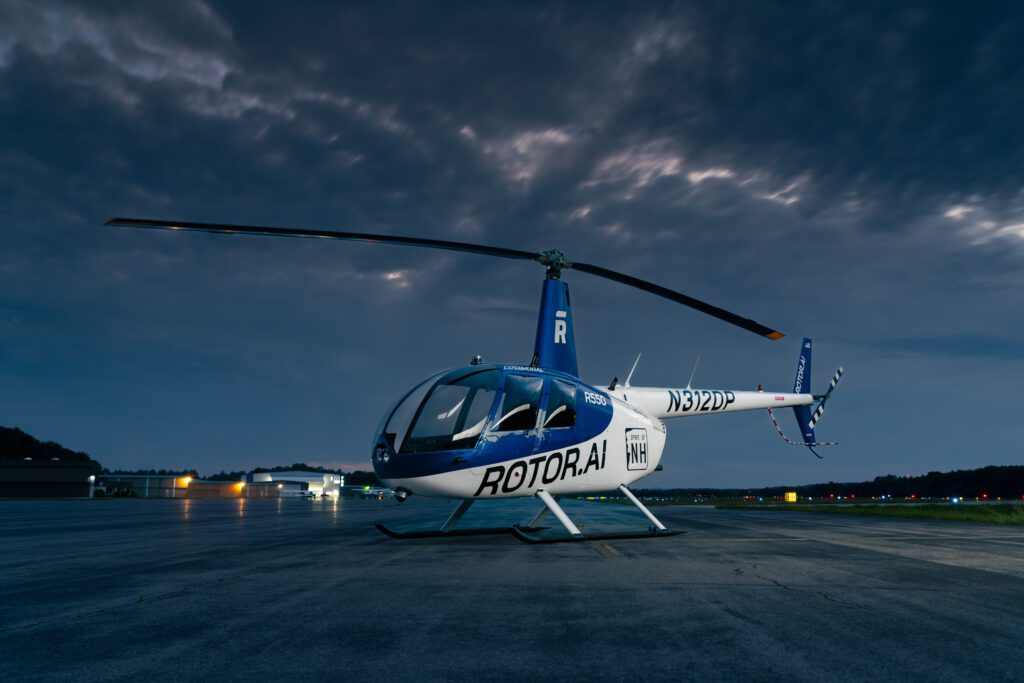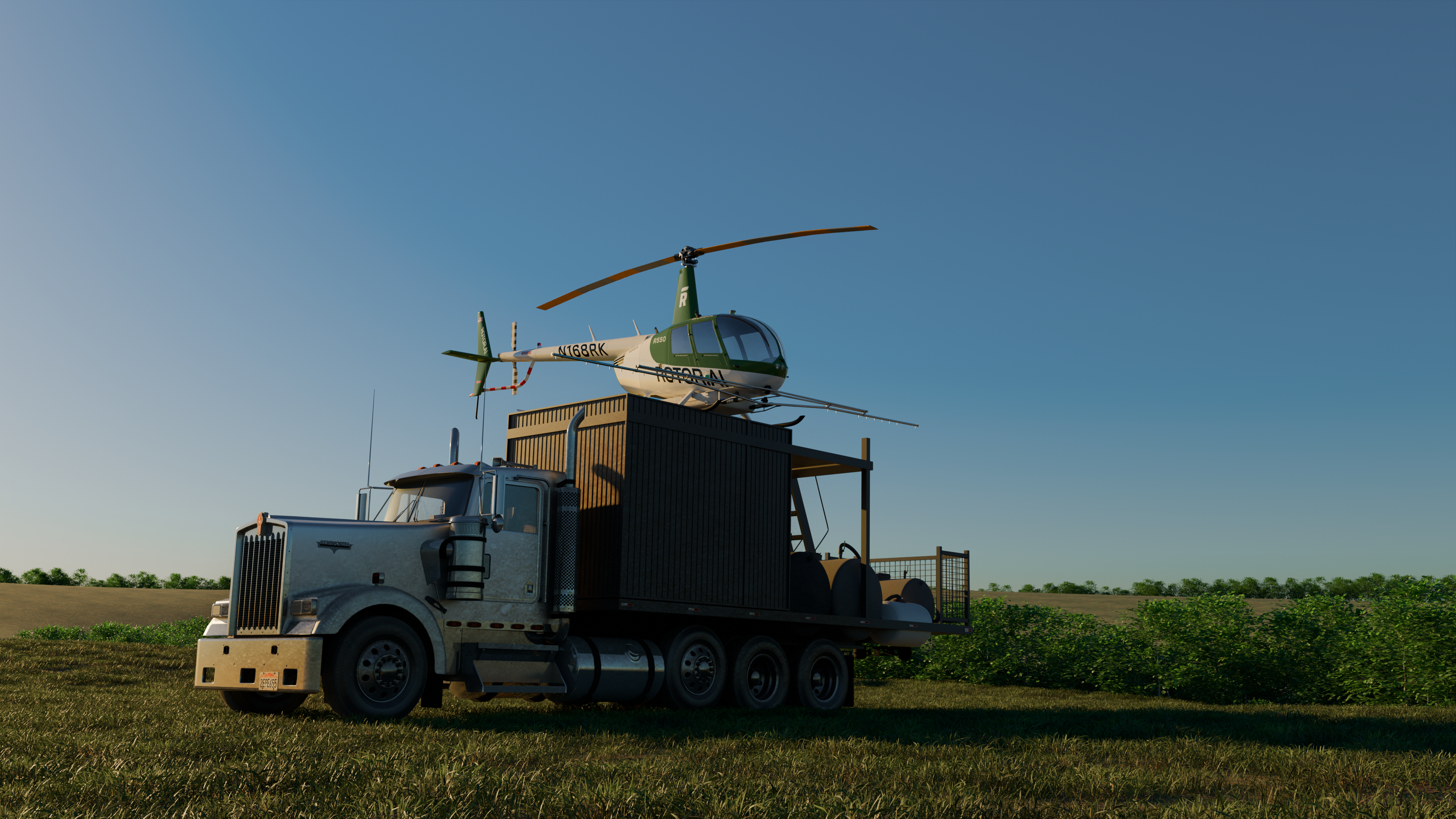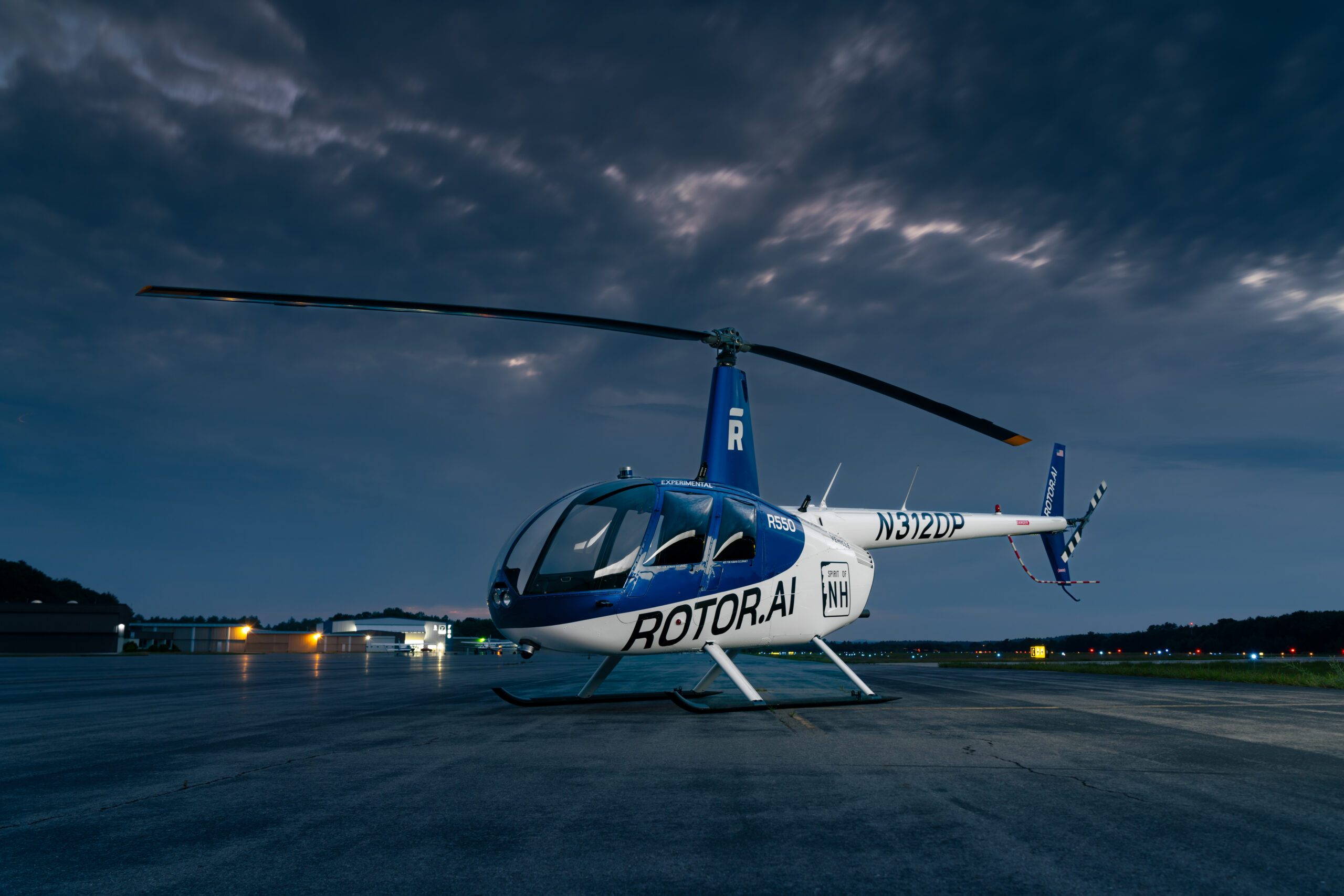New Heavy-Lift UAVs Aim to Revolutionize Agricultural and Utility Operations with Extended Flight Times and Unmatched Payload Capacity
by DRONELIFE Features Editor Jim Magil
A New Hampshire-based company is combining the durability, extended flight time and heavy-lifting capabilities of helicopter technology with the maneuverability and autonomous operation of unmanned aircraft, to introduce the two largest drones produced for the commercial market.
Rotor Technologies recently said it would begin production of Airtruck, a utility UAV with a payload capacity of 1,000-plus pounds, and the Sprayhawk, an agricultural UAV with 110-gallon spraying capacity in time for the 2025 model year. Based on the Robinson R44 full-scale helicopter, the two new UAV’s each will have a maximum takeoff weight of 2,500 pounds and will sell for an introductory price of less than one million dollars.


“We’re using these helicopter platforms and adding a very high level of autonomy and digital flight controls that allows an operator to fly it like a drone,” Rotor CEO Hector Xu said in an interview. He added that the introduction of the two workhorse UAVs would be transformative for a number of industries, particularly those that involve operating at very low altitudes. They could also be substituted for manned aircraft for any mission deemed too dirty or unsafe for a human pilot to perform.
“They’re heavy-lift UAVs, very large drones, and I think that it’s kind of this clash of two worlds, of the drone world and the helicopter world,” he said.
The Robinson R44 model, which provides the body of both of the new aircraft models, is the world’s most popular light helicopter, Xu said. The aircraft is a full-size, four-seat chopper built by the Robinson Helicopter Company of Torrance, California.
Rotor plans to build out its Airtrucks and Sprayhawks employing both new and used R44s. “I think the retrofit market for operators today is also going to be a pretty significant portion of what we do.”
While the Airtruck will be a heavy-lift multiuse drone, adaptable for a variety of applications, the Sprayhawk is specifically designed for the aerial applications of agricultural materials.


“The air truck is this kind of multi-mission platform. It obviously can do a lot of things just as it ships from the factory,” Xu said. “We see it as a pickup truck.”
He said its capacity to lift and haul large payloads for long distances is the most significant aspect of the Airtruck.
“In most drones, you’re counting grams. But with what we have here, you can keep a thousand pounds of whatever you want in the air for an hour and fly at 60, 70 knots, or up to 100 miles an hour.”
The Sprayhawk on the other hand is specially designed as an agricultural drone. It comes equipped with a tank-and-boom system as well as agricultural navigation equipment and software. It can carry about 110 gallons of water, and can cover about 240 acres per hour, which gives it a spraying capacity many times that of the largest spray drone built by DJI, Xu said.


To date, Rotor has built prototypes of each of the new types of aircraft, as well as one production model of the Airtruck, and is close to completing a second production model in the Sprayhawk configuration. The company is currently flight testing the vehicles and hopes to be able to release the results of those tests soon, Xu said.
“Our goal is to deliver a couple of these before the end of the year and get these into the hands of customers. Our production target for next year, for 2025, will be 20 unmanned aircraft, both of Airtruck and Sprayhawk configuration,” Xu said.
Rotor said it is opening up orders to customers in the US and Brazil for the 2025 model year Airtrucks and Sprayhawks, with delivery slots available for late 2025 and early 2026. “The first 2025 production run will be limited to 15 Sprayhawks and 10 Airtrucks. Introductory pricing is $850,000 for the Airtruck and $990,000 for the Sprayhawk for orders placed before December 15, 2024,” Rotor said in a press release.


The company plans to build the aircraft models in a production hangar that is set to open soon in its hometown of Nashua, New Hampshire with a second production hangar planned to open next year. Xu said Rotor will use mostly American-made components in the production process.
“We use almost all U.S. supply chains,” he said. He added that the company builds a lot of the aircraft’s components itself, “and for the things that we don’t build all of our key technology partners are based in the U.S.”
Xu said another advantage of basing its UAVs on established helicopter platforms is their durability. The resulting commercial products will be designed to last 10 or 20 years. Because they have only come into widespread use in recent years, conventionally produced commercial drones have yet to be able to demonstrate such staying power.
“We have single helicopters that have had over 10,000 hours in operation. That’s certainly unheard of for anything in the drone world.,” he said. “We want to offer to drone operators something that has that sort of capability and that sort of durability.”
While industry-leading DJI has established one model for success in the drone industry, small startup Rotor has its own plan to grow and sustain its business.
“We want to provide great customer service. We want to provide heavy-duty, American-made UAVs that meet the long-term needs of customers,” Xu said.
“That message has really resonated with a lot of the people that we talk to,” he said. “We really think we have a really exciting product and we hope people will be excited by what we do.”
Read more:

 Jim Magill is a Houston-based writer with almost a quarter-century of experience covering technical and economic developments in the oil and gas industry. After retiring in December 2019 as a senior editor with S&P Global Platts, Jim began writing about emerging technologies, such as artificial intelligence, robots and drones, and the ways in which they’re contributing to our society. In addition to DroneLife, Jim is a contributor to Forbes.com and his work has appeared in the Houston Chronicle, U.S. News & World Report, and Unmanned Systems, a publication of the Association for Unmanned Vehicle Systems International.
Jim Magill is a Houston-based writer with almost a quarter-century of experience covering technical and economic developments in the oil and gas industry. After retiring in December 2019 as a senior editor with S&P Global Platts, Jim began writing about emerging technologies, such as artificial intelligence, robots and drones, and the ways in which they’re contributing to our society. In addition to DroneLife, Jim is a contributor to Forbes.com and his work has appeared in the Houston Chronicle, U.S. News & World Report, and Unmanned Systems, a publication of the Association for Unmanned Vehicle Systems International.
Miriam McNabb is the Editor-in-Chief of DRONELIFE and CEO of JobForDrones, a professional drone services marketplace, and a fascinated observer of the emerging drone industry and the regulatory environment for drones. Miriam has penned over 3,000 articles focused on the commercial drone space and is an international speaker and recognized figure in the industry. Miriam has a degree from the University of Chicago and over 20 years of experience in high tech sales and marketing for new technologies.
For drone industry consulting or writing, Email Miriam.
TWITTER:@spaldingbarker
Subscribe to DroneLife here.


